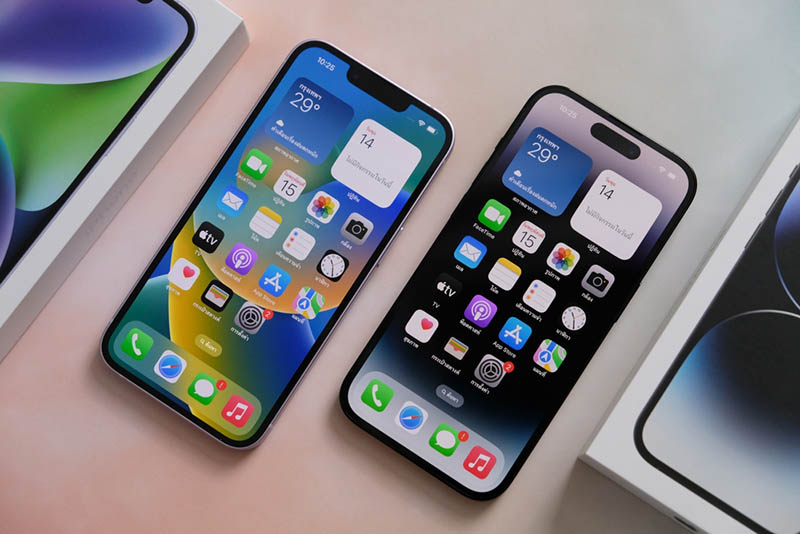Never has such a small piece of technology controlled our lives like the mobile phone, making day-to-day life infinitely easier and replacing several pieces of tech along the way. Because of this handy mini computer we carry around in our pockets, we can make calls, take pictures, listen to music and look up directions on a map, all on the one piece of tech.
Many of us can’t imagine our lives without our phones, but there is a downside: phones can be expensive. Not only can the phones themselves be expensive, but phone plans you need to use your phone can often add a lot of pressure to your household costs.
While many of us are tempted by the newest smartphones and big chunks of data, there are some really simple ways you can save a bit on that monthly phone bill. So, what can you do to save money on your phone bill? Read on as we take you through some tips.
How much does the average phone bill cost?
Adding a mobile phone bill in your budget, especially in households of two or more people, can really add up. According to Canstar Blue data from 2024, the average monthly phone bill for a phone-on-a-plan option is $78 per month. If you have a four-person household and each of you has a new device on a plan at $78 per month, that’s $312 in total each month, or around $3,744 per year.
However, this monthly cost can jump down significantly if you’re on a SIM-only plan: the average monthly postpaid phone bill is $42 per month, while for prepaid the average monthly phone bill is $25 per month. In that same four-person household, that $42 monthly postpaid phone bill would be $168 per month, or $2,016 per year. It goes down even further for prepaid, with $25 per month for four people adding up to $100 per month or $1,200 each year.
While that average phone-on-a-plan bill of $78 may seem like a lot, if you’re buying a new or premium smartphone, these plans can cost well over $100 each month — and in that four-person household you’re easily looking at around $5,000 per year or more.
Postpaid offers you might like
The following table shows a selection of sponsored SIM Only plans on Canstar Blue’s database with links to referral partners.
 |
1 Month Contract (1 month min. cost $14) SIM Only Postpaid
|
30GB Data/month |
$14 Cost/month |
Go to Site |
1. Switch phone plans
This might be an obvious answer, but when you compare phone plans, you may be surprised by how much you can save.
If you’re currently on a contract for a new phone, switching plans might not be as simple for you unless you’re willing to pay off your remaining handset cost. However, if you’ve been on the same SIM-only plan for a few years (or you’ve already paid off your smartphone), you might find there are better phone deals around than the plan you’re currently on.
Keep in mind with prepaid plans, some telcos offer long-expiry plans which can work out to be better value, such as more data per month at a cheaper monthly price, compared to a shorter-term option.
For a quick snapshot of phone plans, the following table includes a selection of postpaid SIM-only plans for under $40 on Canstar Blue’s database, listed in order of standard monthly cost, from the lowest to highest and then by data allowance, largest to smallest. Use our phone plan comparison tool to see plans from a range of other providers. This is a selection of products with links to a referral partner.
2. Check your data usage
Are you using more data than your plan’s inclusions? If so, you might be paying excess data fees, which can cost around $10 per 1GB of extra data you use each month. If you’re regularly going over your data allowance, you might be better off switching to a plan with more gigabytes.
In the case of prepaid plans, when you use more data than your plan’s inclusions, you might find you’re recharging more times per year than you should be and the cost can quickly add up.
On the other end of the spectrum, if you find you’re not using nearly as much data as your plan includes, you could save money by switching to a plan with smaller data inclusions. It’s important to not get sucked into signing up to a big-data plan so you’re not paying for gigabytes you don’t need.
Work out how much mobile data you use to get an idea of what data inclusions you need on a phone plan, then compare a range of plans to see what kind of value for money is available.

3. Phone plans with extras
Take a look at what extras are included on plans. Many telcos, mostly Telstra, Optus and Vodafone, will include bonuses and extras as part of the plan. Telstra, for example, offers entertainment add ons and sometimes you can pick up free streaming subscriptions, while Optus includes access to Optus SubHub and discounts for Optus Sport.
You might also want to consider plans with unlimited capped-speed data or no excess data charges offered by providers including Telstra, Optus, Vodafone and Felix. This will avoid the stress of running out of data — just be mindful that capped-speed might not be fast enough for certain activities like high-definition video streaming.
However, before you jump into a plan with extras, consider if you’ll actually use these features and therefore get real value from signing up. Look out for any catches, such as if all plans include the extras, whether you’re required to stay on the plan for a certain period of time to access the bonuses, or if the plan is considerably more expensive than other plans. Consider the costs, the value in these extras and whether it’s the right option for you.
4. Check for hidden fees
Have you ever received a phone bill (or any bill for that matter) and found you’ve been charged a few dollars extra for a fee you didn’t know about? Hidden fees, like a ‘paper bill fee’ can pop up on your first bill before you even have a chance to opt out. So, before you sign up to any phone plan, it’s important that you read through the Critical Information Summary (CIS) on the telco’s website. If you’re struggling to find the CIS online, you can always chat to customer service and request a copy.
Another common fee is a late payment fee. While telcos do generally offer extensions on bill payments if required — and you’ll usually receive notifications if you haven’t paid your bill on time — if you do pay your bill late, you could be stung with a big fee. Some telcos might also charge you extra for the method of payment you use, so it’s always worth checking the CIS to ensure you’re not being hit by any surprise costs.
Prepaid plans don’t often include these hidden fees as you recharge your plan rather than receiving a bill, but there could still be additional charges, so it’s worth checking the CIS before signing up.
Also, be wary when you’re travelling overseas — international roaming charges can be very expensive and may be turned on by default. If you are travelling and don’t plan on using roaming, make sure you’ve switched roaming off before you head overseas.

5. Bundling your plans and services
Some telcos may offer discounts if you have more than one phone plan or other service (such as an internet plan), on the same account. Vodafone is known for offering discounts for bundling eligible services on the one account, while prepaid provider Yomojo offers discounts when you add more prepaid plans to the one account in an aim to encourage families to sign up to its plans.
It’s worth checking out what discounts are available for bundling plans and services, especially if you’re looking at signing up to the one telco for both your phone and home internet services. Some telcos also offer other utilities, such as electricity, so you may be able to bundle your phone and electricity with the one provider.
6. Skip the extra services and add ons
Often when you sign up for a new phone plan, especially a plan with a new smartphone, you might be offered a whole bunch of optional extras, such as voice-to-text, phone insurance or optional accessories to add on, which can add on a significant amount to your monthly phone bill.
Phone insurance is often one of those extras that can catch you out. Signing up might sound like a good idea at the time, but unless you’re particularly clumsy or prone to losing your phone, you might find it’s a waste of money.
Many of the things that go wrong with your phone (through no fault of your own) might actually be covered by the phone manufacturer’s warranty and some manufacturers might void your phone’s warranty if you take your phone for repairs through a non-authorised or certified repairer or store.
Some telcos might also offer you accessories — such as phone cases — to add on, which are often included on your phone bill as additional monthly instalments. You might find these accessories could be cheaper to buy outright from retailers.
7. Trade in your old handset
If you are looking to upgrade your phone, take a look at what your telco is offering for a trade-in of your old handset. Sometimes a telco will offer some incentive — whether it’s cash, credit or a basic discount — if you upgrade your phone while trading in your old one. There are also other mobile trade-in companies which buy old devices or you could sell your device privately.
Of course, there is an advantage to keeping hold of your old phone if you ever need a backup, or if you want to pass it on to your kid or another family member. Passing an old phone to your child might help you save the costs of buying a new phone for them.
8. Look for discounts or other offers
Some telcos will offer discounts on plan fees for new customers that sign up, whether it’s a discount on your first bill or recharge, or over a longer period. However, you’ll need to look out for any terms or conditions, such as how long you need to stay connected to the plan, and it’s also important to look at the plan’s price after the discount ends to ensure you’re still getting the right value for money plan for your needs.
Our free phone plan comparison tool compares plans from a range of providers across prepaid, postpaid and phone-on-a-plan. To get you started, check out the below tables for a snapshot of plans available to compare on Canstar Blue — simply swap between tabs for prepaid and postpaid plans.
Here is a selection of postpaid plans from Canstar Blue’s database with a minimum of 20GB of data, listed in order of standard cost, lowest to highest, then by data allowance, largest to smallest. Try using our mobile phone plan comparison tool to see a wide range of plans from other providers. This table includes products with links to referral partners.
Here is a selection of prepaid plans from Canstar Blue’s database with a minimum of 10GB of data each month, listed in order of standard cost, lowest to highest, then by data allowance, largest to smallest. If you want to compare a larger range of offers from other providers, use our phone plan comparison tool. This table includes products with links to referral partners.


Share this article